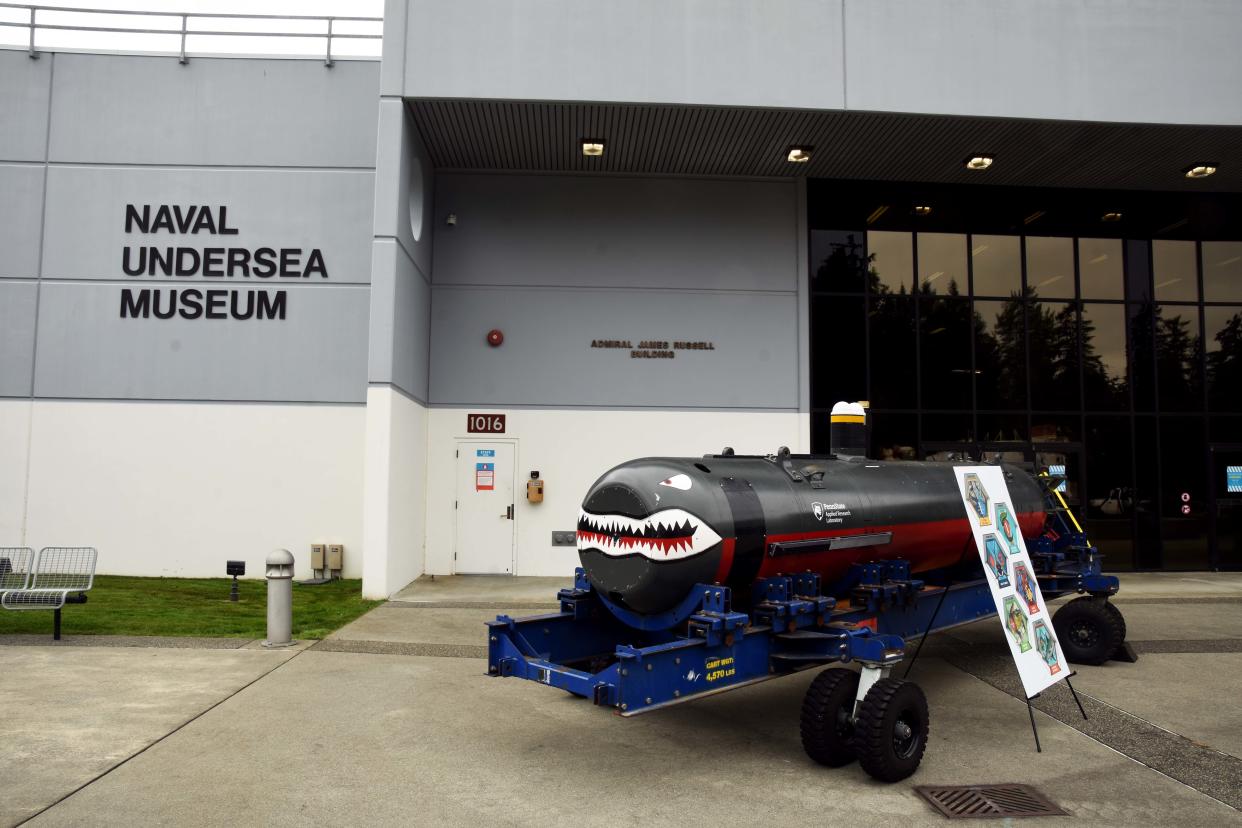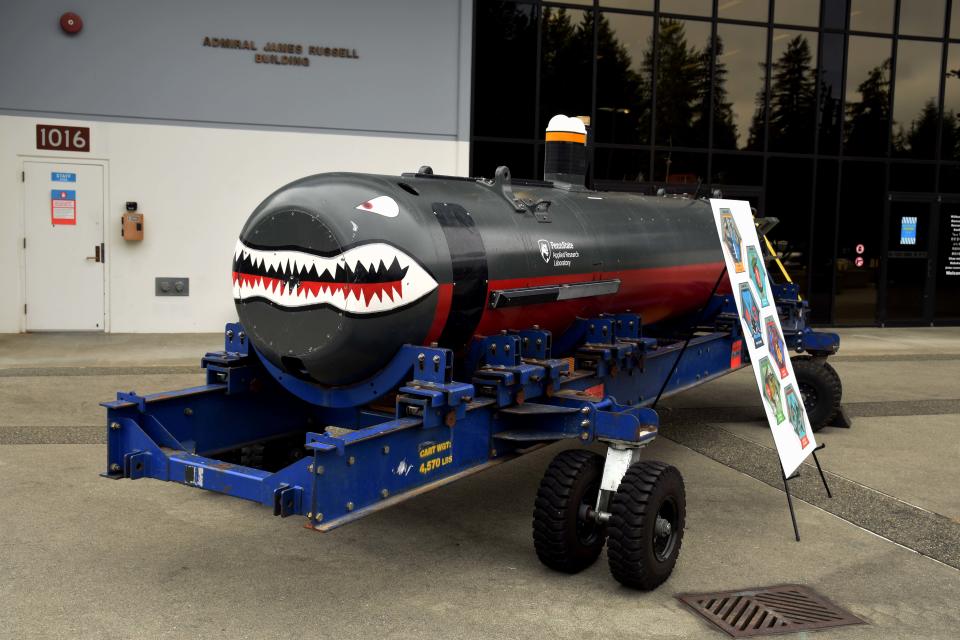Navy retires 2008-built UUV for aging technology, costly repairs

KEYPORT — In 2008, a Penn State University Applied Research Laboratory team built Large Training Vehicle 38 (LTV-38), an 8,800-pound, 27-foot long, 38-inch in diameter unmanned undersea vehicle that the Navy used to test and evaluate new technologies.
Sixteen years later, the Navy retired LTV-38 because the technologies the unmanned undersea vehicle tested weren't new anymore, and it was too expensive to maintain. LTV-38 was officially donated to the Naval Undersea Museum in Keyport in a ceremony at the museum on Tuesday, though no specific plans of when the public can see the UUV in the museum have been planned, the museum said.
"We ended up damaging it and the tail section of it was too expensive to fix," said Reb Revels, research and development engineer at Penn State University and the lead of the UUV program. "Instead of just throwing it away, we're donating it to the museum. And also because of how much it's done."
What is LTV-38?
LTV-38 — in 2008, the largest UUV the Navy had — was designed to be multifunctional and used in many different programs to test technologies that can be used in operations, for example, side-scan sonar, Revels said.
The UUV was insured for $10 million. Inside the vehicle are computer systems in the front, batteries in the middle, and an electric motor at the end, Revels said.
The vehicle was first deployed on the Arleigh Burke-class destroyer USS Bainbridge shortly after the Penn State laboratory assembled the UUV at State College, Pennsylvania, said Loren Nichols, Director of Resource Management at Commander, Unmanned Undersea Vehicle Group ONE (UUVGRU-1).
In 2014, the vehicle was delivered to NUWC Keyport and was operated by Submarine Development Squadron FIVE, Detachment UUV when it was in service, Mike Dolbec, commodore at UUVGRU-1 said.
To enhance esprit de corps under the order of Commander Robert Patchin, the front side of LTV-38 was painted in 2021 to add a shark face to make it look not just a vehicle, Brian Nuss, deputy director at UUVGRU-1 said.
The shark face design comes from a World War II heritage — a P-51 Mustang, a single-seat, single-engine fighter aircraft used by the U.S. Army Air Forces during World War II, Nuss said.
Retiring aging LTV-38 doesn't affect Navy's UUV development

Retiring LTV-38 won't affect the Navy's capability to develop UUVs, Dolbec said.
"This vehicle has been able to advance the UV capabilities all the way through what we've been able to accomplish with it. And that new capabilities are now coming along online so much faster that the technology that was cutting edge in 2008 is now outdated," Dolbec explained.
"So, we're able to make things smaller, make things more efficient, and then bring new capabilities into the enterprise. So, no loss of capability, because of what we learned from this vehicle," Dolbec said.
The LTV series has two more vehicles currently in service. LTV-48 (48 inches in diameter) and LTV-56 (56 inches in diameter) were both built by Penn State University. LTV-48 is based in Keyport and LTV-56 is now in Pennsylvania, help developing UUV capabilities, Revels said.
UUV shows partnership between the Navy and academia
LTV-38 has contributed to the Navy's research and development on UUV in the past 16 years, Dolbec said.
"The training tactics and procedures that our sailors are using today can be traced back to its source of how we use the vehicle and what we learned from this vehicle," Dolbec said.
Dolbec viewed the UUV as a physical manifestation of the many accomplishments reached by the Navy and its partners in academia, the commodore said.
"Because of that partnership, together, we're able to turn a bright idea into something that is operationally impactful and is able to accomplish a mission forward deployed around the world," Dolbec said.
This article originally appeared on Kitsap Sun: Navy donates retired UUV to Keyport undersea museum for public viewing

